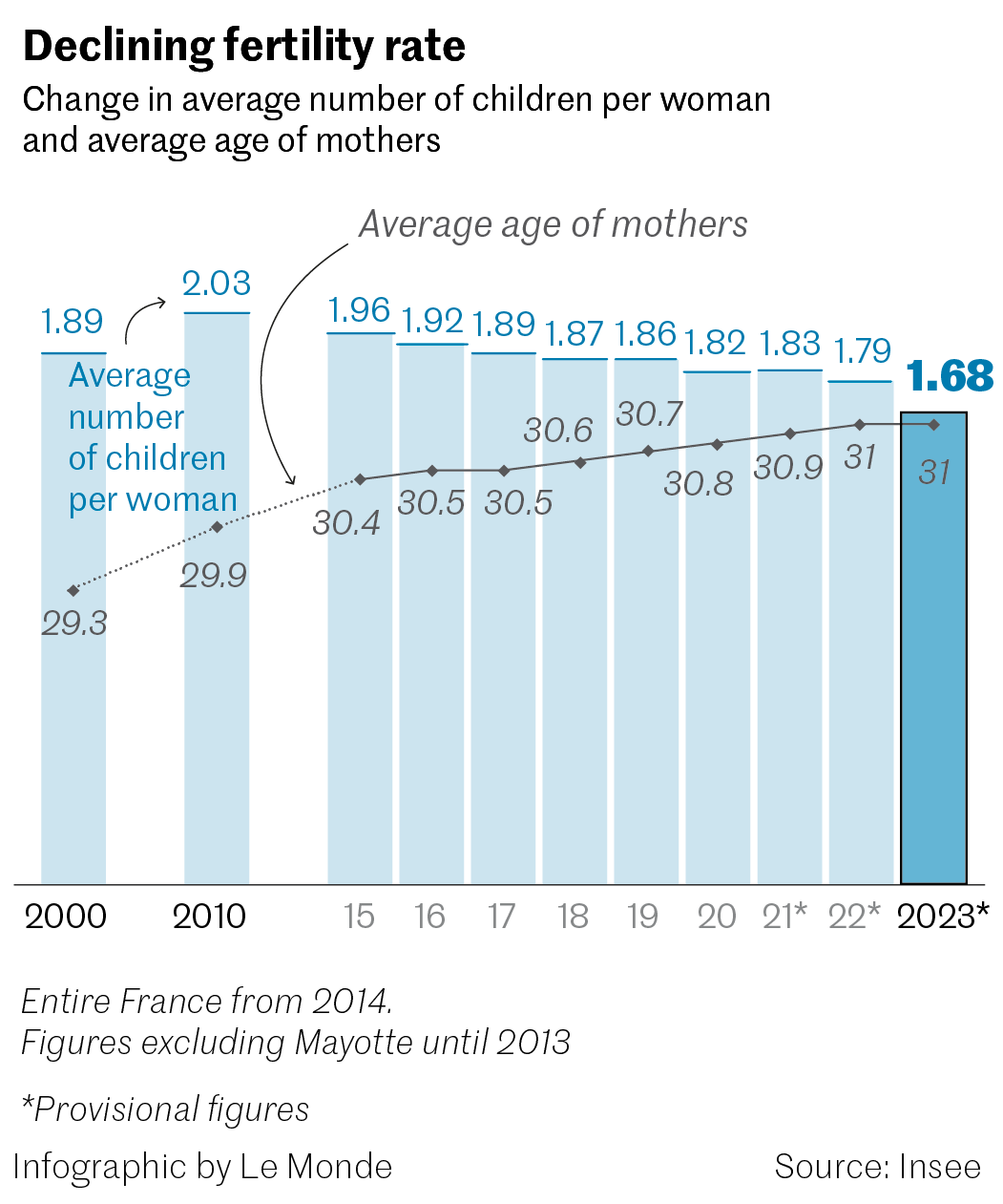

Birth rates were down again in France in 2023. This was the main finding from the annual demographic report from the French National Institute for Statistics and Economic Studies (INSEE), presented on Tuesday, January 16. Despite this fall, the population has grown at a rate of 0.3%, the same as in 2022. The second most populous European country, behind Germany, France had 68.4 million inhabitants on January 1, 2024.
The drop in the birth rate, recorded since 2011, always raises a sensitive question: Is this the beginning of the end for the French demographic model, envied by our European neighbors for its vitality? Or is the drop in births, 6.6% lower in 2023 than in 2022, merely a cyclical phenomenon?
Demographers, accustomed to observing and analyzing behavior over several decades, say it's hard to answer at this stage. Admittedly, the total fertility rate (TFR), which stood at 1.68 children per woman in 2023, is down again. However, with these latest results, France remains one of the better performers within the European Union, where the average TFR was 1.5 children per woman in 2020, the latest data available, and is set to fall further.
Fertility is probably the most closely scrutinized element in this annual review. In a September publication, the INSEE was already predicting "the lowest number of births since the Second World War" in 2022, but 2023 sets a new record.


As a result, 678,000 babies were born last year, 6.6% fewer than in 2022, and almost 20% fewer than in 2010, when the last peak in births was recorded. Until now, "the drop in births was very slight until 2014, then between 2014 and 2022, they fell at a more or less stable rate, with the exception of the slight rebound in 2021,"pointed out demographer Laurent Toulemon, a fertility specialist at the National Institute for Demographic Studies (INED).
In parallel with this decline – which is set to continue – the total fertility rate has fallen to 1.68 children per woman. This compares with 1.79 in 2022. "You have to go back to 1993, during the recession, to find such a low level, at 1.66 children per woman," explained Sylvie Le Minez, head of the demographic and social studies unit at INSEE.
With a twist: This time, all age groups are affected by the downturn. "We're starting to see fairly low fertility rates between the ages of 30 and 34, whereas until now the phenomenon has mainly affected the age groups before 30," noted Toulemon. Even among older women, aged between 40 and 50, a slight decrease has been recorded, whereas their fertility rate had been rising steadily since the mid-1980s.
You have 65% of this article left to read. The rest is for subscribers only.
